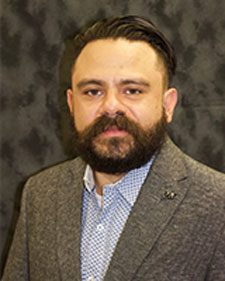Dr. Socrates Munoz |
||||
 |
Assistant Professor |
|||
| CBC 322 | ||||
| socmunoz@ksu.edu | ||||
Research Themes  |
||||
| 785-532-6138 (lab) | ||||
Biography |
|
| 2021-Pres. 2021-2021 2019-2021 2015-2019 2010-2015 2005-2009 |
Assistant Professor Process Chemistry Scientist, Provivi Inc., Santa Monica, CA Postdoctoral Researcher, California Institute of Technology Postdoctoral Fellow, University of Southern California Ph.D., Organic Chemistry, University of Southern California B.S., Pharmaceutical Chemistry and Biology, University of Guadalajara |
Research Overview |
|
Synthesis – Catalysis – New Reactions and Methodology Or research revolves around the intersection of synthetic organic, organometallic chemistry and catalysis. We dedicate special attention to the development of new synthetic methods and reagents to enable the synthesis of small molecules for medicinal applications. Our research is driven by Da Vinci’s motto “Simplicity is the Ultimate Sophistication”. Thus,we aim to develop novel synthetic methods that are practical, efficient, cost-effective, and ultimately amenable for real life applications. Exploiting the Awesome Power of Catalysis : In addition to organocatalyzed reactions, our group focuses on developing new synthetic organic transformations catalyzed by earth-abundant metals such as Cu, Ni, Fe as well as other valuable transition metal catalysts (Pd, Rh, Ru, etc.). Our main research areas are: (i) Organofluorine Chemistry, (ii) Utilization of carboxylic acids as abundant chemical feedstocks in cross-coupling reactions and catalysis (iii) Utilization of sulfur dioxide (SO2) or chemical surrogates in organometallic catalysis and synthesis. Development of asymmetric transformations in all the three areas mentioned above stands as a critical unmet need in the field, and special attention is also devoted to this goal. Our group strives to make significant contributions that address the current limitations by developing novel asymmetric catalytic transformations, thereby enabling the synthetic community and expanding the synthetic chemist’s toolbox. |
Selected publications |
|